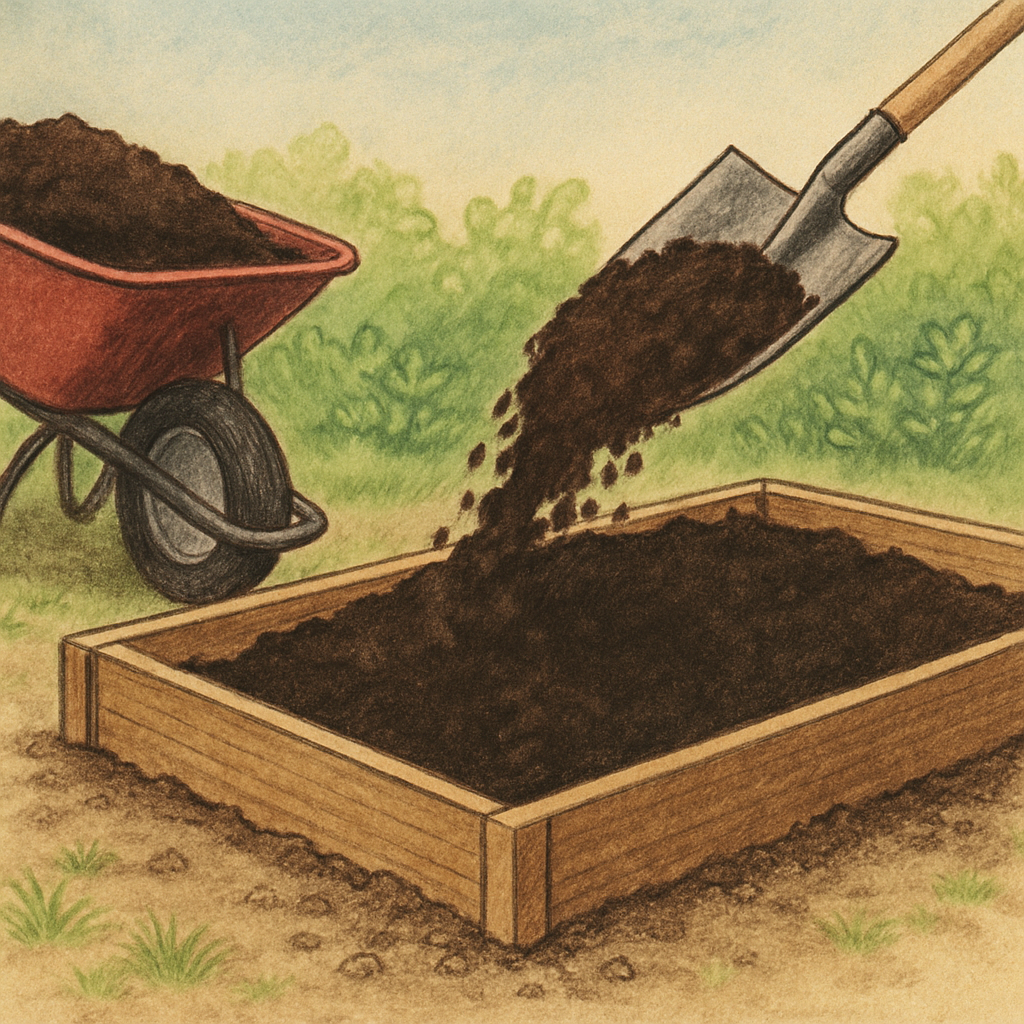Top soiling and fertilising are key practices for any gardener or landscaper. They enhance soil quality and boost plant growth.
Adding a layer of nutrient-rich soil, known as top soiling, can transform your garden. It improves soil structure and supports healthy plants.
Fertilising, on the other hand, provides essential nutrients like nitrogen and potassium. These nutrients are vital for robust plant development.
Organic fertilization is a sustainable approach to enrich your soil. It uses natural materials like compost and manure, promoting long-term soil health.
In this guide, we will explore effective techniques and tips for top soiling and fertilising. Learn how to maintain a thriving garden with sustainable practices.
What is Top Soiling and Why is it Important?
Top soiling involves adding a new layer of rich soil on top of the existing soil. This practice aims to improve soil quality and create a better environment for plant roots. By doing so, you support healthy plant growth and enhance the overall look of your garden.
There are multiple benefits to top soiling. It enhances soil aeration and drainage, increasing your soil’s ability to hold moisture. Additionally, it adds organic matter, which improves the soil’s structure and nutrient retention. These advantages make it an essential step in maintaining a healthy garden or lawn.
Some key reasons why top soiling is important include:
- Repairing damaged areas in gardens or lawns.
- Improving soil structure for root penetration.
- Adding nutrients and organic matter.
Top soiling is best done in the spring or fall when weather conditions are favorable. These seasons provide ideal temperatures and moisture levels, ensuring successful integration of the new soil layer. Choosing the right time will maximize the benefits of your efforts.
The Basics of Fertilising: Essential Nutrients for Healthy Soil
Fertilising supplies essential nutrients that are crucial for robust plant growth. The main nutrients plants need include nitrogen (N), phosphorus (P), and potassium (K). Each plays a unique role in plant health and development.
These nutrients contribute to various plant functions. Nitrogen is essential for leaf growth, while phosphorus aids in root development and bloom production. Potassium strengthens the plant’s overall structure and resistance to disease.
Understanding these key nutrients helps in choosing the correct fertiliser. When selecting a fertiliser, consider the specific needs of your plants. Look for the N-P-K ratio on the package, which indicates the percentages of these nutrients.
Common types of fertiliser:
- Nitrogen-rich (for leafy growth)
- Phosphorus-rich (for roots and flowers)
- Balanced (for overall health)
Proper application ensures plants receive the right amount of nutrients. Applying too little can limit growth, while too much can cause damage. Timing is also important; fertilize during active growth periods for maximum benefit.
Organic Fertilization: Sustainable Ways to Enrich Your Soil
Organic fertilization relies on natural materials to enhance soil fertility. This approach is environmentally friendly and safe for gardens. It involves using compost, manure, and bone meal to supply nutrients.
These organic materials release nutrients slowly. The slow release provides a consistent supply, which is beneficial for plant growth. This process also improves soil structure and moisture retention, aiding in robust plant development.
Creating organic fertilizer at home is simple. Composting kitchen scraps and yard waste can result in rich, nutrient-packed compost. Manure from herbivores, like cows and horses, is another excellent source. Bone meal is a great phosphorus source and promotes root health.
Benefits of organic fertilization include:
- Reducing reliance on synthetic chemicals
- Improving soil aeration and drainage
- Supporting beneficial microorganisms
Overall, organic fertilization nurtures a thriving, sustainable garden environment. By choosing organic, you contribute to the health and longevity of your garden’s ecosystem.
Step-by-Step Guide to Top Soiling Your Garden or Lawn
Top soiling rejuvenates your garden or lawn with a fresh layer of nutrient-rich soil. It enhances soil quality and plant health. Begin by assessing the current condition of your soil. A soil test helps determine nutrient deficiencies.
Next, select the right type of topsoil. Opt for a well-blended mix with a high percentage of organic matter. Make sure it’s free of contaminants. Clear the area of debris, including rocks and weeds, to create a smooth surface.
Apply the topsoil evenly. Use a shovel for small areas or a spreader for larger ones. The layer should be around 1-2 inches thick. Once spread, gently incorporate it into the existing soil.
After application, rake the soil to level it. This ensures even distribution. Water the area thoroughly to help the soil settle and integrate. Watering also activates any nutrients present.
Here’s a simple list for top soiling:
- Test existing soil
- Choose suitable topsoil
- Clear the area
- Apply and incorporate topsoil
- Level and water
This method boosts soil fertility and prepares it for planting or reseeding. Regular top soiling can significantly improve the health and appearance of your garden or lawn.
Soil Health Tips for Long-Term Success
Maintaining healthy soil is vital for sustainable gardening. Healthy soil supports vibrant plant growth and resists erosion. Implementing regular soil health practices ensures long-term success.
Rotate your crops to prevent nutrient depletion and reduce pests. This practice diversifies soil nutrients and interrupts pest cycles. Testing the soil pH can guide amendments to create the ideal growing environment.
Add organic matter routinely, like compost and mulch, to boost soil structure. These materials improve moisture retention and nutrient availability, contributing to healthier plants. Using green manure, like clover, adds nitrogen to the soil.
Here are some key tips:
- Rotate crops regularly
- Test soil pH regularly
- Add compost and mulch
- Use green manure for nutrients
Following these tips can enhance your garden’s productivity and resilience. Consistent attention to soil health pays dividends in lush, thriving gardens.
Common Mistakes to Avoid in Top Soiling and Fertilising
Avoiding common errors in top soiling and fertilising can greatly enhance results. Many gardeners overlook soil testing, leading to nutrient imbalances. Knowing the soil’s needs is crucial for efficient fertilisation.
Over-applying fertilisers is another prevalent mistake. It can lead to nutrient runoff and harm beneficial soil organisms. Ensure you apply the right amount for optimal plant growth.
Here’s a list of common mistakes:
- Skipping soil testing
- Overusing fertilisers
- Ignoring soil pH
- Applying fertiliser at the wrong time
By avoiding these mistakes, you can promote healthier soil and plants. This leads to more productive and sustainable gardening practices.
Frequently Asked Questions about Top Soiling and Fertilising
How often should I top soil my garden?
Top soiling is typically recommended once or twice a year. Spring and fall are ideal times for most regions.
Can I use chemical fertilisers with top soiling?
Chemical fertilisers can be used, but organic options are preferred. Organic fertilisers improve soil health and reduce environmental impact.
Is it necessary to test my soil before fertilising?
Testing your soil is highly beneficial. It identifies nutrient deficiencies and informs your choice of fertiliser.
What is the difference between compost and manure?
Compost is decomposed organic matter, while manure is animal waste. Both enrich soil but contain different nutrient profiles.
Conclusion: Building Healthy Soil for a Thriving Garden
Investing effort in top soiling and fertilising can transform your garden into a lush, productive oasis. By choosing organic options, you not only nourish your plants but also safeguard the environment.
Healthy soil is the foundation of successful gardening. With regular care and smart techniques, you can ensure your garden thrives through every season. Embrace these practices for sustainable and vibrant growth.




